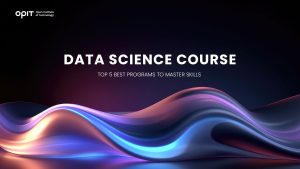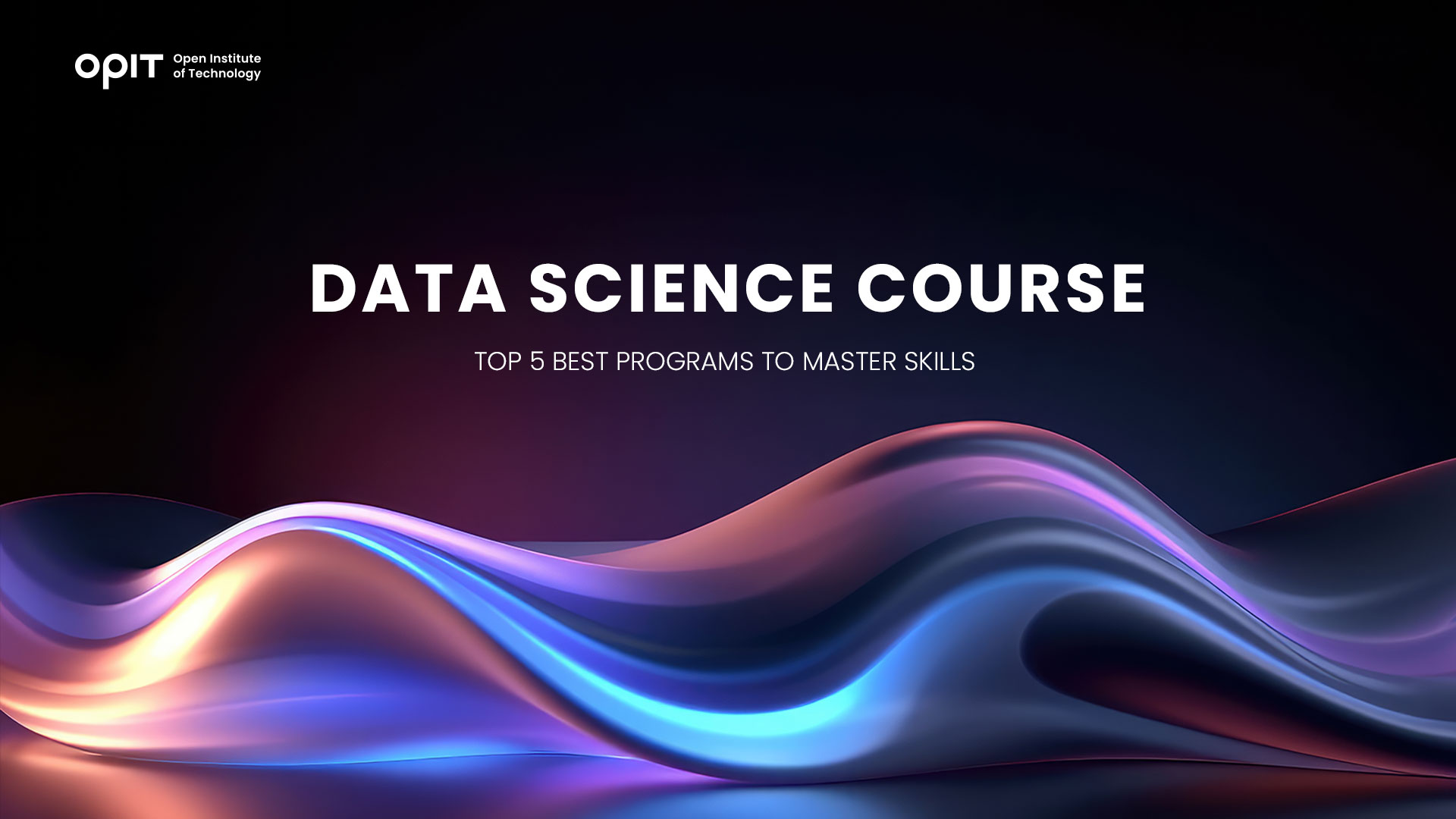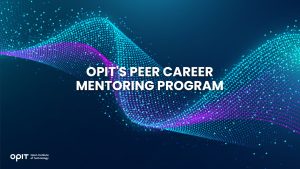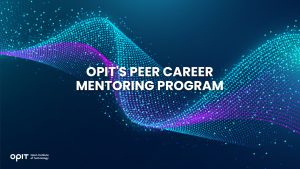

Data science is all the rage these days. It plays a pivotal role in many organizations, as it makes raw data easily understandable for managers and owners. In turn, it provides stakeholders with better decision-making opportunities.
Considering the enormous importance of data science, it’s no surprise the industry has grown to a whopping $65 billion. It’s also no wonder why there are 150K+ data scientists in the U.S., either, with more people expected to flock to this realm. So, why not become one of them and set yourself up to earn more than $120,000 per year?
All it takes is to invest in high-quality education, and this article will point you in the right direction. Here’s an overview of the five best data science courses to help propel your career.
Factors to Consider When Choosing a Data Science Course
We’ll take a closer look at the best data science courses in 2023 shortly, but let’s put that on hold for a few moments. After all, you don’t want to end up enrolling in a module that doesn’t suit your needs and budget, do you?
Our data science course buyer’s guide has come to the rescue. Check out the factors you should consider when selecting your module.
Course Content and Curriculum
Becoming a data scientist is a lucrative but broad career path. Did you know that this field branches out into multiple sub-fields? These include data engineering, machine learning, and data analysis. There’s no one-size-fits-all solution when it comes to data science courses, which is why you should make sure the curriculum ties in with your goals.
For example, if you want to spearhead the next generation of machine learning developments, look for a course that focuses on machine learning. In other words, module content should be in line with your needs.
Course Duration and Flexibility
Course duration is another important consideration. If you only want to scratch the surface of data science, a so-called boot camp might be a good choice. It typically lasts two or three months and gives you a basic understanding of this topic.
But if you wish to become a data science mastermind, a BSc or MSc in data science is the right option. It takes at least four years, but it teaches you all you need to know about this area, including theoretical knowledge and practical skills.
Instructor’s Expertise and Experience
Experienced instructors should also be a priority. Just like Elon Musk leads the way in Tesla with his extensive programming expertise, your teachers should be your focal point with their data science knowledge. Check their credentials before hitting the “Enroll” button.
Course Fees and Return on Investment
While you can get a lot of value out of a free data science course, paid alternatives are the real deal. Still, be sure you can afford the module before starting your first lesson. Reliable providers should offer transparent pricing with no hidden fees.
Course Reviews and Ratings
One of the best ways to determine if a course is compatible with you is word of mouth. So, put your search engine to work and see what others are saying about different modules. You’ll be able to learn more about the instructors’ approach, pricing, and content.
Best Data Science Courses Available
Now that you have a sense of direction when looking for a data science course, let’s get to the brass tacks of this article. Completing one of the following modules can be your leg up, giving you an edge over other candidates during your job search.
1. Data Science Specialization by Coursera
Coursera is the repository of many courses, including those related to data science. Their Data Science Specialization course can be an excellent choice if you have some understanding of this field but want to expand your horizons.
If you sign up for the module, you’ll gain access to an array of valuable lessons. The list includes cleaning and analyzing data with R, managing different projects with GitHub, and applying data regression models.
Furthermore, the instructors come from established institutions, and you get a shareable certificate after completing the course. Keep in mind that some prior Python knowledge is recommended to take the module.
Pros:
- Beginner-friendly
- Reliable instructors
- Shareable certificate
Cons:
- Requires Python knowledge
Price: Free enrollment from May 30; $49 per month otherwise
Duration: Approx. 11 months
2. The Data Science Course: Complete Data Science Bootcamp by Udemy
Although this is technically a boot camp, it’s one of the most comprehensive data science courses online. It lifts the veil of mystery surrounding data science and offers detailed explanations of the key concepts in this area.
For instance, if you wish to apply deep learning principles in your work, you can learn how to do so with this course. Other useful skills you can pick up here include Python-based machine learning, data pre-processing, logistic and linear regression, and statistical analyses.
The biggest downside is that lesson quality is inconsistent. Unlike Coursera, Udemy doesn’t attract renowned data science professionals. Basically, anyone can teach on the platform, even if they don’t have credentials. The good news is that you get a certificate of completion for passing the course.
Pros:
- Fairly detailed
- Wide range of skills
- Certificate of completion
Cons:
- Inconsistent teaching quality
Price: $74.99
Duration: 31 hours of video materials
3. Python for Data Science and Machine Learning Bootcamp by Udemy
Udemy makes another appearance on our rundown with their Python for Data Science and Machine Learning course. As you’ve probably guessed, it’s geared toward budding data scientists who want to climb the career ladder with Python.
And admittedly, the course does a good job of teaching the basics of this programming language. It tackles a variety of topics, such as machine learning, Pandas, Seaborn, Sci-Kit, decision tree algorithms, and natural language processing. It comes with a certificate of completion and is relatively short, allowing you to grasp the fundamentals of Python in just a few weeks.
Again, the only drawback might be lesson quality. You may receive instructions from first-class teachers, but you may also have subpar instructors.
Pros:
- Good representation of Python basics
- Natural language processing module
- Short and simple
Cons:
- Inconsistent instructions
Price: $74.99
Duration: 25 hours of video materials
4. Master of Applied Data Science by University of Michigan
For some aspiring data scientists, courses provided by renowned universities are the only ones in play. If you have the same affinity, consider this Master of Applied Data Science at the University of Michigan.
What stands out about this course is that it’s fully online, despite coming from a top-rated school. Therefore, you don’t have to attend classes in person to make headway.
When it comes to the curriculum, it covers most (if not all) subjects you need to apply data science in real life. It delves deep into machine learning, natural language processing, data preparation, and network analysis. Plus, you get a hands-on experience with real data from several companies around the globe. Completing the module earns you an accredited diploma.
As for the instructors, you shouldn’t have issues with inconsistent lectures. Michigan professors are well-versed in data science and know how to transfer knowledge effectively.
Still, many people are put off the program due to the price. It also requires some previous knowledge of statistics and Python.
Pros:
- Renowned institution
- Fully online
- Covers everything data science-related
- Great instructors
Cons:
- Pricey
- Previous knowledge required
Price: $34,000-$46,000
Duration: 12-36 weeks
5. Online Master of Computer Science by Arizona State University
The University of Michigan can be an excellent choice, but it doesn’t blow other schools out of the water. Arizona State is a solid option, too, with its Online Master of Computer Science.
Practical teaching is the highlight of this course. The curriculum focuses on applied projects throughout its duration, enabling you to gain a better understanding of data science and related fields. Some of the skills you can acquire and polish here include machine learning, software security, and computer forensics.
On top of that, the course puts a heavy emphasis on blockchain-related data science. Hence, if you want to test the waters with this ever-growing industry, Arizona State has you covered.
Instructions are also high-quality. Even though it’s an online course, the professors devote the same attention to you as to your fellow students on campus.
As for the drawbacks, the course isn’t affordable for many people. You also need to meet strict admission and GPA criteria.
Pros:
- In-depth course
- Blockchain analysis
- Top-rated professors
Cons:
- On the expensive side
- Stringent enrollment criteria
Price: $15,000
Duration: 18-36 weeks
Tips for Succeeding in a Data Science Course
Just because you choose an exceptional data science course doesn’t mean you’ll breeze through the curriculum. The following tips will help make your experience smoother.
- Set clear goals and expectations — Determine whether you want a basic or advanced understanding of data science.
- Dedicated time for learning and practice — Allocate as much time as necessary to learn and practice key skills.
- Engage in online forums and communities — Visit forums and other online communities to find heaps of resources and course materials.
- Work on real-world projects — Practice applying data science by manipulating real-life data.
- Continuously update your skills — Always look for new learning opportunities to get a full picture of your curriculum.
A Remunerative Career Is Waiting
If you’re looking to master critical skills, the best data science course for you might be Master of Applied Data Science by the University of Michigan. It’s expensive, but it’s jam-packed with real-world knowledge. If you need something simpler that still offers some value, the courses by Coursera and Udemy may be a good fit.
So, make your pick carefully. By enrolling in a course that aligns with your needs, you’ll get a better learning experience and higher retention. And nothing paves the way for a lucrative career in data science like top-grade education.
Related posts

Source:
- Raconteur, published on November 06th, 2025
Many firms have conducted successful Artificial Intelligence (AI) pilot projects, but scaling them across departments and workflows remains a challenge. Inference costs, data silos, talent gaps and poor alignment with business strategy are just some of the issues that leave organisations trapped in pilot purgatory. This inability to scale successful experiments means AI’s potential for improving enterprise efficiency, decision-making and innovation isn’t fully realised. So what’s the solution?
Although it’s not a magic bullet, an AI operating model is really the foundation for scaling pilot projects up to enterprise-wide deployments. Essentially it’s a structured framework that defines how the organisation develops, deploys and governs AI. By bringing together infrastructure, data, people, and governance in a flexible and secure way, it ensures that AI delivers value at scale while remaining ethical and compliant.
“A successful AI proof-of-concept is like building a single race car that can go fast,” says Professor Yu Xiong, chair of business analytics at the UK-based Surrey Business School. “An efficient AI technology operations model, however, is the entire system – the processes, tools, and team structures – for continuously manufacturing, maintaining, and safely operating an entire fleet of cars.”
But while the importance of this framework is clear, how should enterprises establish and embed it?
“It begins with a clear strategy that defines objectives, desired outcomes, and measurable success criteria, such as model performance, bias detection, and regulatory compliance metrics,” says Professor Azadeh Haratiannezhadi, co-founder of generative AI company Taktify and professor of generative AI in cybersecurity at OPIT – the Open Institute of Technology.
Platforms, tools and MLOps pipelines that enable models to be deployed, monitored and scaled in a safe and efficient way are also essential in practical terms.
“Tools and infrastructure must also be selected with transparency, cost, and governance in mind,” says Efrain Ruh, continental chief technology officer for Europe at Digitate. “Crucially, organisations need to continuously monitor the evolving AI landscape and adapt their models to new capabilities and market offerings.”
An open approach
The most effective AI operating models are also founded on openness, interoperability and modularity. Open source platforms and tools provide greater control over data, deployment environments and costs, for example. These characteristics can help enterprises to avoid vendor lock-in, successfully align AI to business culture and values, and embed it safely into cross-department workflows.
“Modularity and platformisation…avoids building isolated ‘silos’ for each project,” explains professor Xiong. “Instead, it provides a shared, reusable ‘AI platform’ that integrates toolchains for data preparation, model training, deployment, monitoring, and retraining. This drastically improves efficiency and reduces the cost of redundant work.”
A strong data strategy is equally vital for ensuring high-quality performance and reducing bias. Ideally, the AI operating model should be cloud and LLM agnostic too.
“This allows organisations to coordinate and orchestrate AI agents from various sources, whether that’s internal or 3rd party,” says Babak Hodjat, global chief technology officer of AI at Cognizant. “The interoperability also means businesses can adopt an agile iterative process for AI projects that is guided by measuring efficiency, productivity, and quality gains, while guaranteeing trust and safety are built into all elements of design and implementation.”
A robust AI operating model should feature clear objectives for compliance, security and data privacy, as well as accountability structures. Richard Corbridge, chief information officer of Segro, advises organisations to: “Start small with well-scoped pilots that solve real pain points, then bake in repeatable patterns, data contracts, test harnesses, explainability checks and rollback plans, so learning can be scaled without multiplying risk. If you don’t codify how models are approved, deployed, monitored and retired, you won’t get past pilot purgatory.”
Of course, technology alone can’t drive successful AI adoption at scale: the right skills and culture are also essential for embedding AI across the enterprise.
“Multidisciplinary teams that combine technical expertise in AI, security, and governance with deep business knowledge create a foundation for sustainable adoption,” says Professor Haratiannezhadi. “Ongoing training ensures staff acquire advanced AI skills while understanding associated risks and responsibilities.”
Ultimately, an AI operating model is the playbook that enables an enterprise to use AI responsibly and effectively at scale. By drawing together governance, technological infrastructure, cultural change and open collaboration, it supports the shift from isolated experiments to the kind of sustainable AI capability that can drive competitive advantage.
In other words, it’s the foundation for turning ambition into reality, and finally escaping pilot purgatory for good.

The Open Institute of Technology (OPIT) is the perfect place for those looking to master the core skills and gain the fundamental knowledge they need to enter the exciting and dynamic environment of the tech industry. While OPIT’s various degrees and courses unlock the doors to numerous careers, students may not know exactly which line of work they wish to enter, or how, exactly, to take the next steps.
That’s why, as well as providing exceptional online education in fields like Responsible AI, Computer Science, and Digital Business, OPIT also offers an array of career-related services, like the Peer Career Mentoring Program. Designed to provide the expert advice and support students need, this program helps students and alumni gain inspiration and insight to map out their future careers.
Introducing the OPIT Peer Career Mentoring Program
As the name implies, OPIT’s Peer Career Mentoring Program is about connecting students and alumni with experienced peers to provide insights, guidance, and mentorship and support their next steps on both a personal and professional level.
It provides a highly supportive and empowering space in which current and former learners can receive career-related advice and guidance, harnessing the rich and varied experiences of the OPIT community to accelerate growth and development.
Meet the Mentors
Plenty of experienced, expert mentors have already signed up to play their part in the Peer Career Mentoring Program at OPIT. They include managers, analysts, researchers, and more, all ready and eager to share the benefits of their experience and their unique perspectives on the tech industry, careers in tech, and the educational experience at OPIT.
Examples include:
- Marco Lorenzi: Having graduated from the MSc in Applied Data Science and AI program at OPIT, Marco has since progressed to a role as a Prompt Engineer at RWS Group and is passionate about supporting younger learners as they take their first steps into the workforce or seek career evolution.
- Antonio Amendolagine: Antonio graduated from the OPIT MSc in Applied Data Science and AI and currently works as a Product Marketing and CRM Manager with MER MEC SpA, focusing on international B2B businesses. Like other mentors in the program, he enjoys helping students feel more confident about achieving their future aims.
- Asya Mantovani: Asya took the MSc in Responsible AI program at OPIT before taking the next steps in her career as a Software Engineer with Accenture, one of the largest IT companies in the world, and a trusted partner of the institute. With a firm belief in knowledge-sharing and mutual support, she’s eager to help students progress and succeed.
The Value of the Peer Mentoring Program
The OPIT Peer Career Mentoring Program is an invaluable source of support, inspiration, motivation, and guidance for the many students and graduates of OPIT who feel the need for a helping hand or guiding light to help them find the way or make the right decisions moving forward. It’s a program built around the sharing of wisdom, skills, and insights, designed to empower all who take part.
Every student is different. Some have very clear, fixed, and firm objectives in mind for their futures. Others may have a slightly more vague outline of where they want to go and what they want to do. Others live more in the moment, focusing purely on the here and now, but not thinking too far ahead. All of these different types of people may need guidance and support from time to time, and peer mentoring provides that.
This program is also just one of many ways in which OPIT bridges the gaps between learners around the world, creating a whole community of students and educators, linked together by their shared passions for technology and development. So, even though you may study remotely at OPIT, you never need to feel alone or isolated from your peers.
Additional Career Services Offered by OPIT
The Peer Career Mentoring Program is just one part of the larger array of career services that students enjoy at the Open Institute of Technology.
- Career Coaching and Support: Students can schedule one-to-one sessions with the institute’s experts to receive insightful feedback, flexibly customized to their exact needs and situation. They can request resume audits, hone their interview skills, and develop action plans for the future, all with the help of experienced, expert coaches.
- Resource Hub: Maybe you need help differentiating between various career paths, or seeing where your degree might take you. Or you need a bit of assistance in handling the challenges of the job-hunting process. Either way, the OPIT Resource Hub contains the in-depth guides you need to get ahead and gain practical skills to confidently move forward.
- Career Events: Regularly, OPIT hosts online career event sessions with industry experts and leaders as guest speakers about the topics that most interest today’s tech students and graduates. You can join workshops to sharpen your skills and become a better prospect in the job market, or just listen to the lessons and insights of the pros.
- Internship Opportunities: There are few better ways to begin your professional journey than an internship at a top-tier company. OPIT unlocks the doors to numerous internship roles with trusted institute partners, as well as additional professional and project opportunities where you can get hands-on work experience at a high level.
In addition to the above, OPIT also teams up with an array of leading organizations around the world, including some of the biggest names, including AWS, Accenture, and Hype. Through this network of trust, OPIT facilitates students’ steps into the world of work.
Start Your Study Journey Today
As well as the Peer Career Mentoring Program, OPIT provides numerous other exciting advantages for those who enroll, including progressive assessments, round-the-clock support, affordable rates, and a team of international professors from top universities with real-world experience in technology. In short, it’s the perfect place to push forward and get the knowledge you need to succeed.
So, if you’re eager to become a tech leader of tomorrow, learn more about OPIT today.
Have questions?
Visit our FAQ page or get in touch with us!
Write us at +39 335 576 0263
Get in touch at hello@opit.com
Talk to one of our Study Advisors
We are international
We can speak in:


